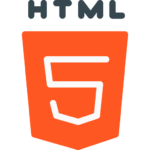Advanced JavaScript Course and Advanced JavaScript Classes in Ahmedabad,





Our Advanced JavaScript Course and Advanced JavaScript Classes in Ahmedabad, Satellite empower students with the essential skills and knowledge to build dynamic, interactive websites and web applications. Throughout the course, students delve deep into the advanced concepts of JavaScript, including ES6+ features, asynchronous programming, and modern frameworks, mastering their intricacies and harnessing their combined power to create robust, scalable solutions.
By the end of the Advanced JavaScript Course, students emerge as proficient JavaScript developers, equipped with the tools and expertise to thrive in today’s competitive tech industry. Join us at WebAarambh Academy on this transformative journey with Advanced JavaScript Classes and unlock the boundless opportunities awaiting you in the ever-evolving field of web development.
Additionally, students gain expertise in designing, developing, and deploying cross-platform mobile apps using Flutter, positioning them for success in the rapidly growing field of mobile app development.
A closure is a function that has access to its own scope, the scope of its parent function, and the global scope, even after the parent function has finished executing.
Example:
function outer() {
let counter = 0;
return function inner() {
counter++;
return counter;
};
}
const increment = outer();
console.log(increment()); // 1
console.log(increment()); // 2
Promises are objects used to handle asynchronous operations. They represent the eventual completion (or failure) of an asynchronous task and its resulting value.
States of a Promise:
Example:
const promise = new Promise((resolve, reject) => {
setTimeout(() => resolve(“Success”), 1000);
});
promise.then((value) => console.log(value)).catch((error) => console.error(error));
Example:
console.log(5 == “5”); // true (type coercion)
console.log(5 === “5”); // false (strict comparison)
This keyword refers to the object it belongs to:
In an arrow function, this is lexically inherited from the parent scope.
async/await simplifies writing asynchronous code by making it look synchronous.
Example:
async function fetch data() {
try {
const response = await fetch(“https://api.example.com/data”);
const data = await response.json();
console.log(data);
} catch (error) {
console.error(“Error fetching data:”, error);
}
}
fetchData();

Learn by doing! At WebAarambh Academy, we focus on project-based learning to help you apply advanced JavaScript concepts in real-world scenarios, ensuring a thorough grasp of the subject.
We provide end-to-end placement assistance, including resume building, portfolio development, and mock interviews tailored to roles like JavaScript Developer, Front-End Developer, and Full-Stack Developer.
Whether you’re a student, a working professional, or looking to upskill, our weekday and weekend batches are designed to fit your schedule seamlessly.
Stay updated with JavaScript’s evolving ecosystem even after completing the course. Attend alumni workshops, and webinars, and get access to updated course materials.





The course focuses on enhancing problem-solving skills by engaging students in coding challenges, algorithms, and data structures. These activities are crucial for excelling in technical interviews and tackling real-world development tasks with confidence.
Yes, the course covers modern tools and JavaScript frameworks like React, Node.js, and Express.js. These are highly sought-after skills in the job market, ensuring you stay ahead of the curve.
You’ll acquire employer-demanded skills such as:
Integrating back-end services using JavaScript.
These skills are designed to make you industry-ready.
The training is conducted at our Ahmedabad (Satellite) campus. The campus offers a vibrant and engaging learning environment with state-of-the-art facilities and collaborative spaces for an enhanced learning experience.
The course is tailored to meet the demands of today’s tech industry by focusing on practical and modern skills like working with cutting-edge JavaScript frameworks, problem-solving, and integrating full-stack applications. These competencies significantly boost your employability.
The event loop is a mechanism that handles the execution of multiple pieces of code, including asynchronous operations, by managing the call stack and the task queue.
Example Workflow:
The prototype is an object from which other objects inherit properties and methods. Every JavaScript function has a prototype property that is used to implement inheritance.
Example:
function Person(name) {
this.name = name;
}
Person.prototype.greet = function () {
console.log(`Hello, my name is ${this.name}`);
};
const person1 = new Person(“Alice”);
person1.greet(); // Hello, my name is Alice
Modules allow you to break JavaScript code into reusable pieces. They improve maintainability and avoid namespace collisions by encapsulating code.
Example:
// module.js
export const greet = () => console.log(“Hello”);
// main.js
import { greet } from “./module.js”;
greet(); // Hello
Copyright © 2024 Webaarambh | Powered by Creatpix infotech